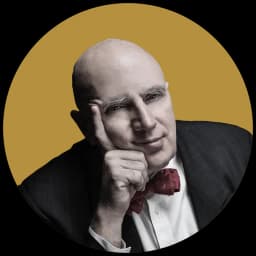With ‘Rhythms of India,’ the Jazz at Lincoln Center Orchestra Closes Its Season on an Otherworldly Note
Many jazz instrumentalists make a point of playing with a vocalized inflection and the authority of the human voice, and the JALC soloists all give that voice an Indian accent.

Jazz at Lincoln Center Orchestra with Wynton Marsalis
‘Rhythms of India’
Rose Hall, Through June 9
Streaming Through June 15
As a prelude to “Rhythms of India,” the final concert of Jazz at Lincoln Center’s 2023-24 season, the composer and educator Kavita Shah on Friday night gave a brief but excellent talk describing various moments in the 1960s and ’70s when American jazz musicians tried to incorporate Indian music into their work. We heard excerpts from John Coltrane’s “India” (1961) and Alice Coltrane’s “Journey in Satchidananda” (1971), as well as examples of John McLaughlin’s Mahavishnu Orchestra and Shakti.
At the end of the 30-minute presentation, though, she then hit us with the news that the concert we were about to hear wasn’t going to sound anything like the music she had just played.
As we filed into Rose Hall, we were greeted by the unusual sight of a platform on the stage, directly at house left of the horns and in front of the rhythm section. By the second tune, that platform was filled with six Indian musicians. This, essentially, was what classical composers call a “concerto grosso”: a combination of two distinct ensembles, usually a symphonic orchestra and a chamber group, that play together and interact in varied and often surprising ways.
The concert consisted of eight traditional Indian folk songs arranged by different members of the Jazz at Lincoln Center Orchestra. The artistic director, Wynton Marsalis, announced the first as “a song of welcoming and acceptance”; this was “Kesariya Balam,” arranged by trombonist Chris Crenshaw. It began with pianist Dan Nimmer using the bass notes of the keyboard to suggest an Indian-style drone, over which we first heard flautist Jay Gandi and vocalist Malini Awasthi.
What we heard next made the Indo-jazz fusions of the 1970s sound decidedly tepid by comparison: After a few minutes of Mr. Gandhi and Ms. Awasthi, the orchestra entered dramatically and all at once. There would be other pieces that started with the Indian ensemble and the jazz orchestra would slowly and subtly start to fill in behind them, but not this opener: All of a sudden, the orchestra was simply there.
Mr. Crenshaw took the first solo, followed by saxophonist Abdias Armenteros; many of the best instrumentalists in jazz make a point of playing with a vocalized inflection and the authority of the human voice, and on Friday night the JALC soloists were all giving that voice an Indian accent. Mr. Armenteros’s tenor took on a tone that was positively otherworldly.
The second number, “Raag Miyan Malhar,” was arranged by Mr. Marsalis, who noted that the saxophone section’s part was the work of the evening’s musical director, Kavi Mani Kapoor, who also played percussion. The remaining musicians, tabla artist Anubrata Chatterjee, ghatam artist Ghatam Umashankar, and vocalist Roopa Mahadevan, as well as Mr. Kapoor, joined the orchestra at this point.
“Raag” also opened with Mr. Gandi, now playing a larger instrument that sounded somewhat like a western alto flute or even a miniature didgeridoo, over Carlos Henriquez’s arco bass accompaniment. As the orchestra entered, the proceedings shifted into something like a jazz waltz time signature. Both Mr. Marsalis and Marcus Printup soloed on trumpet, followed by baritone saxophonist Paul Nedzilla and a very effective passage featuring all three trombones — Vincent Gradner and Elliot Mason in addition to Mr. Crenshaw — as well as the orchestra’s newest member, alto saxophonist Alexa Taratino. The two ensembles began to mix it up more when Mr. Gandhi played an out-and-out jazz flute solo over the JALC rhythm section.
On the opening two pieces, it seemed like the Indian ensemble was setting the stage for the jazz big band, but on others the orchestra seemed to be there primarily to accompany the Indians. Some pieces made a point to play up the often rather stark contrast between the two sets of musicians, but others did a bravura job of integrating the musical styles. It was almost a journey, back and forth, between these two musical poles, in which players like Sherman Irby, who played a remarkable solo on the rare sopranino saxophone on “Ka Karu Sajni,” discovered the common ground. Mr. Irby’s own arrangement of “Vathapi Ganapathim” included an arresting section of three horns, trumpet, trombone, and the arranger’s own alto, playing in a disjointed fashion together, without the rhythm section.
The second act featured a particularly exciting “Thillana” by Ted Nash, who recently retired from the orchestra’s reed section. The Indian ensemble included singing by Roopa Mahadevan and Ghatam Umashankar; she trilled long, legato melodic lines while he chanted short, staccato, and highly repetitive phrases — at first they worked sort of against each other, then they came together in the chant, weaving in and out of the orchestra. At different points, Mr. Nash’s arrangement suggested Hebrew liturgical music, Bollywood psychedelia, and parts of Duke Ellington’s “Far East Suite.” It also framed a vigorous soprano solo by Victor Goines, his finest moment of the entire season.
It was a suitably exhilarating climax. The packed house fairly exploded at the end, echoing what the orchestra had done a few moments earlier. There are a few more shows Saturday and Sunday, but I’ll be seeing you next year.

